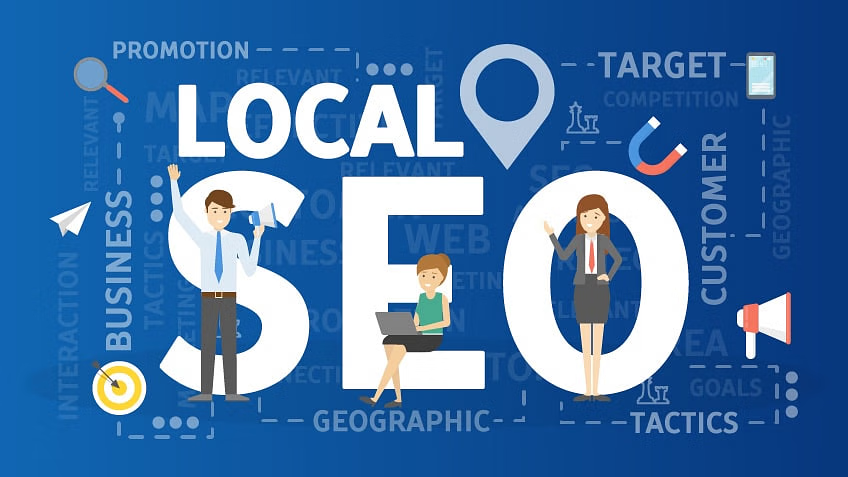Table of Contents
In today’s digital landscape, local SEO is the backbone of visibility for small and medium-sized businesses aiming to attract customers in specific geographic areas. Whether you run a restaurant, dental clinic, or retail store, understanding and implementing local SEO can dramatically increase your chances of being discovered by people nearby.
What Is Local SEO?
Local SEO (Local Search Engine Optimization) is the process of optimizing your online presence to attract more business from relevant local searches on Google and other search engines. This includes optimizing your website, Google Business Profile, local listings, and more to ensure you appear in results for location-specific queries such as “best coffee shop near me” or “chiropractor in Dallas.”
Why Local SEO Matters
Local SEO is crucial for any business that serves a specific area or has a physical location. Here’s why:
- Enhanced Online Visibility: Appear in Google Search, Maps, and local directories.
- Increased Foot Traffic and Calls: People searching locally are often ready to make a decision.
- Improved Trust and Credibility: High ratings and positive reviews build trust.
- Cost-Effective Marketing: Reach your local audience without high advertising costs.
How Google Determines Local Rankings
Google uses a separate local algorithm to rank local search results. The three primary factors are:
- Relevance: How well your listing matches what someone is searching for.
- Distance: How far your location is from the searcher.
- Prominence: How well-known your business is, based on reviews, backlinks, and other online signals.
Key Components of Local SEO
1. Google Business Profile Optimization
Your Google Business Profile (GBP) is your local storefront online. To optimize:
- Claim and verify your listing
- Use accurate and consistent NAP (Name, Address, Phone number)
- Select the right business categories
- Add high-quality photos and videos
- Publish posts, offers, and updates
- Encourage and respond to reviews
2. Local Keyword Optimization
Include location-specific keywords in your:
- Website content
- Page titles and meta descriptions
- URLs and headers
- Blog articles and FAQs
3. Local Citations
Citations are mentions of your business name, address, and phone number on local directories like Yelp, Facebook, Bing Places, and industry-specific sites. Ensure consistency across all platforms.
4. Reviews and Ratings
Reviews are a ranking and conversion factor. Encourage happy customers to leave feedback on Google and respond to all reviews professionally. 73% of unhappy customers would return if a business resolves their issue with a well-crafted response.
5. Localized Website Content
Create dedicated location pages if you serve multiple areas. Publish blog content relevant to your local audience—events, news, tips, and collaborations with other businesses.
6. Mobile Optimization
Ensure your site loads quickly and is mobile-friendly. Most local searches are done on mobile devices.
7. Backlinks & Unstructured Citations
Earn links from:
- Local blogs
- Chamber of commerce sites
- Local events and news sites
- Social media mentions
These help boost your authority and visibility.
8. On-Page Local SEO
Optimize title tags, meta descriptions, headers, and content with:
- Local keywords (e.g., “best bakery in Brooklyn”)
- Geo-specific terms (neighborhoods, landmarks, zip codes)
9. Schema Markup
Use structured data (schema.org) to help Google understand your business information better. This can improve your chances of appearing in rich results.
Local SEO Checklist
Advanced Local SEO Strategies
- Use UTM tracking to measure which parts of your GBP are driving traffic.
- Fight spam: Report fake listings and reviews in your area.
- Join local business groups and collaborate for cross-promotion.
- Engage in social media: Build a strong, local-focused social presence.
- Respond to Q&A and Google Updates regularly.
Tools to Track Local SEO Performance
- Google Business Profile Insights: Track views, clicks, calls, and direction requests.
- Google Search Console: See which keywords drive traffic.
- Semrush / BrightLocal / Local Falcon: Monitor rankings in maps and packs.
Common Local SEO Mistakes to Avoid
- Inaccurate or inconsistent NAP details
- Neglecting to claim or verify your GBP
- Ignoring negative reviews
- Keyword stuffing your business name
- Failing to update business hours or information
Conclusion
Local SEO is not a one-time task but an ongoing strategy that can greatly benefit any business with a physical location or service area. By optimizing your online presence and engaging with your local community, you can improve visibility, build trust, and ultimately drive more local traffic and sales.
Start small, be consistent, and stay informed on updates to Google’s local ranking algorithms. Local SEO is one of the most powerful digital marketing tools for community-focused brands.


